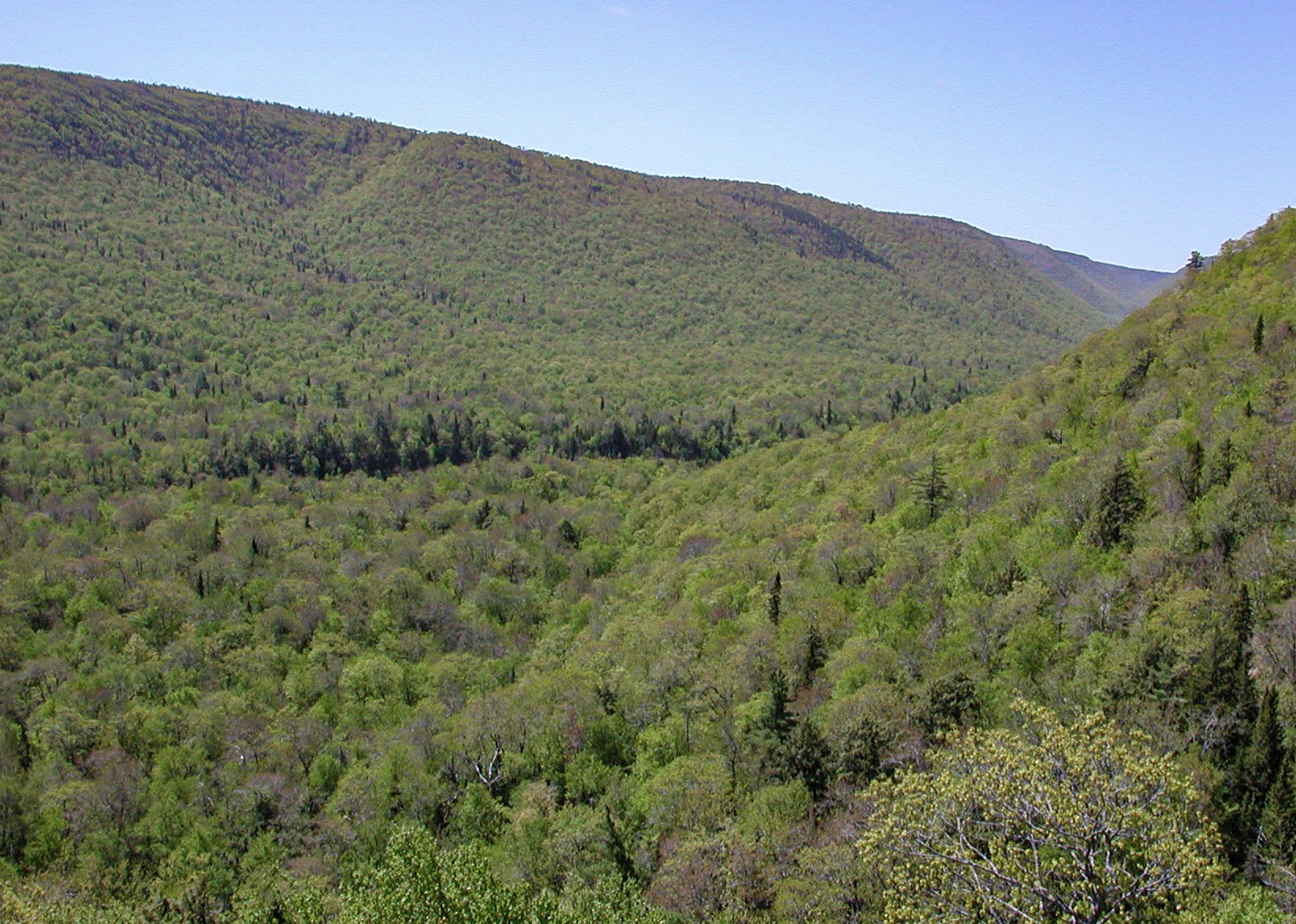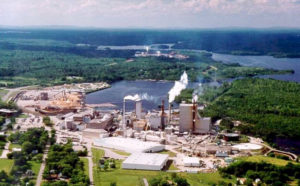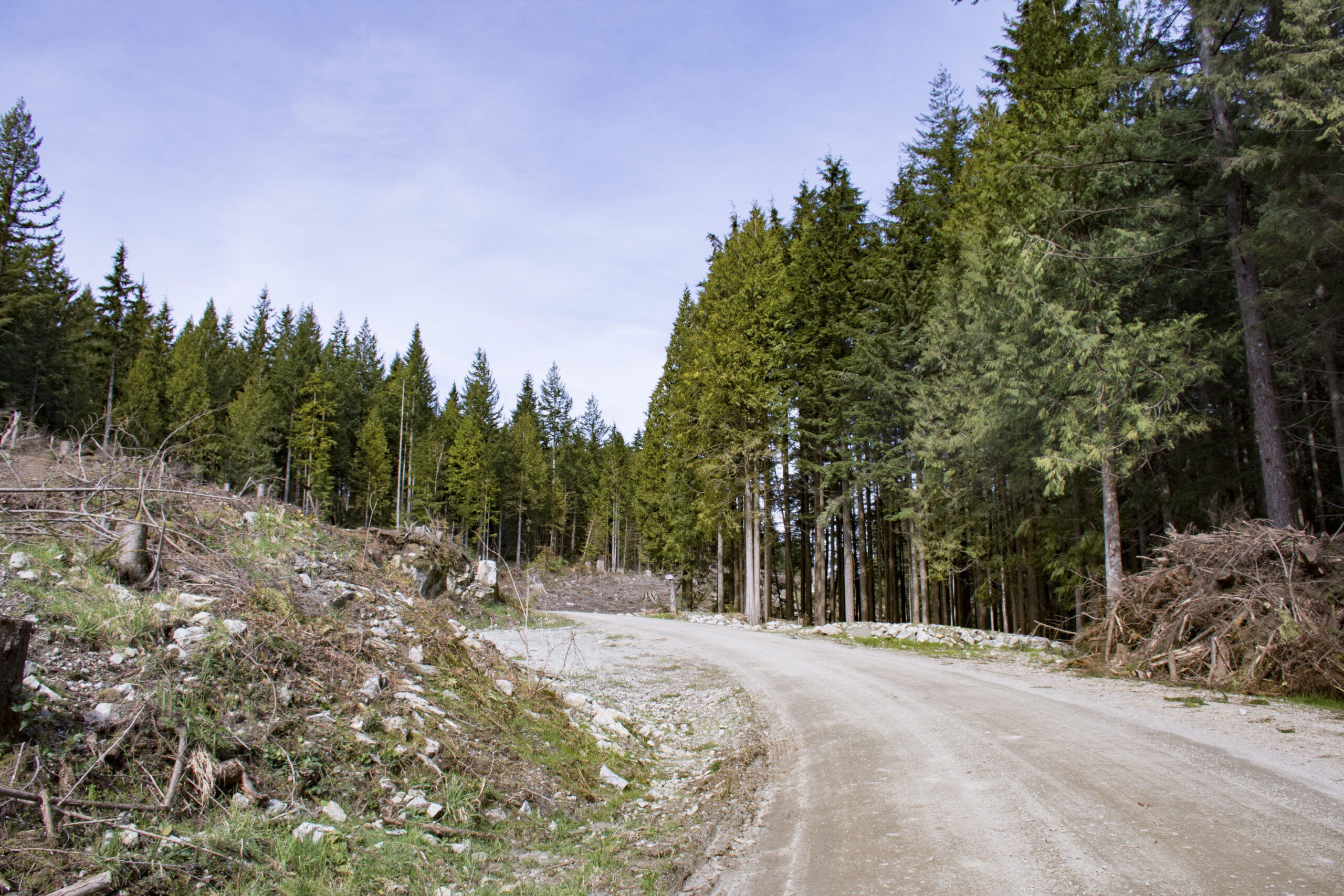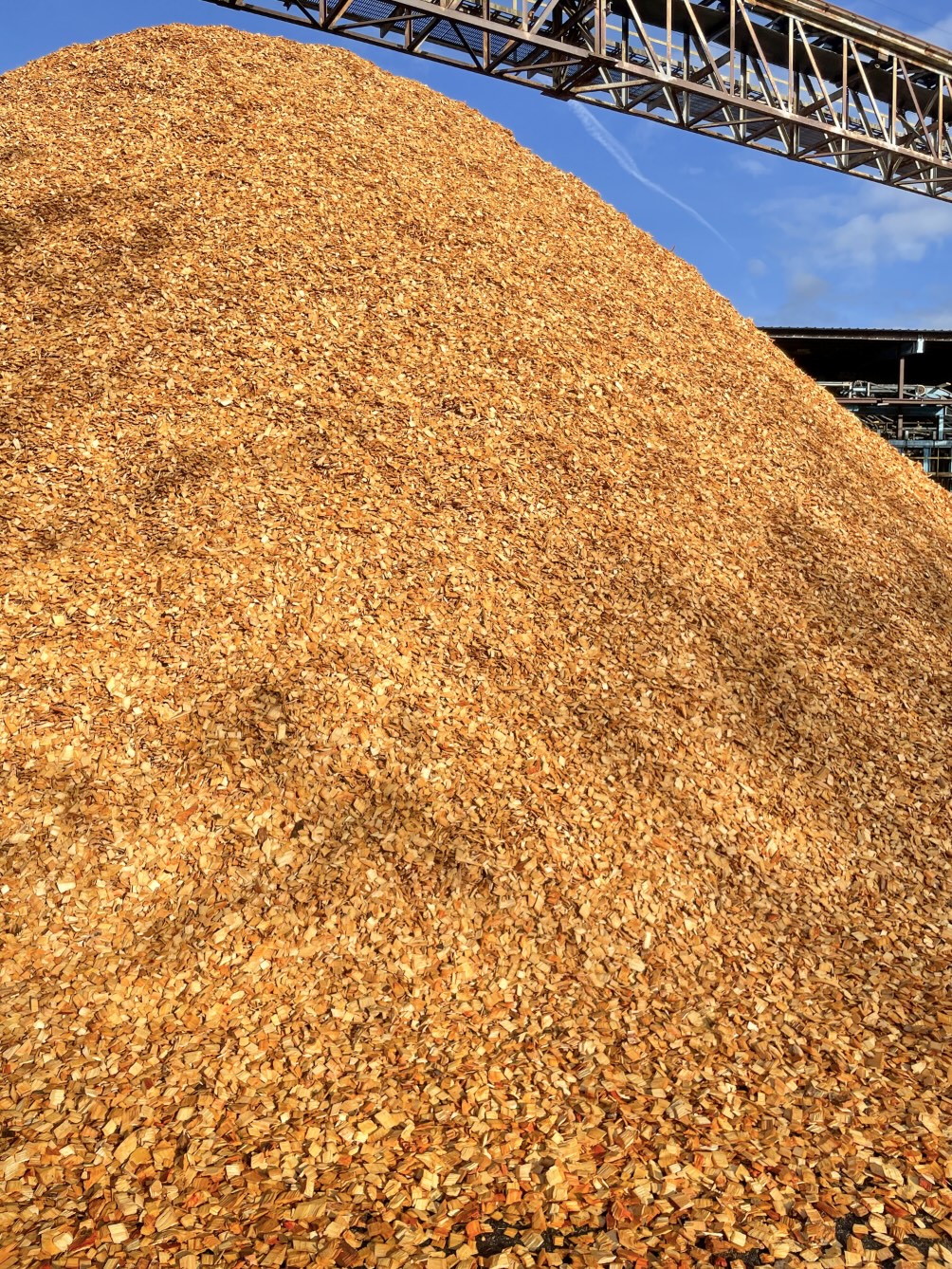It took a judge from the other side of the country to put a finger on the challenge posed by the designation of Aboriginal title for the Cowichan Tribes over private land in Richmond. “A declaration of Aboriginal title over privately owned lands — which, by its very nature, gives the Aboriginal beneficiary exclusive possession, occupation, and use — would sound the death knell of reconciliation with the interests of non-Aboriginal Canadians.” That’s Justice Ernest Drapeau of New Brunswick Court of Appeal. …There are differences between the New Brunswick case and…both are likely to end up on the docket of the Supreme Court of Canada sooner or later. …” This week, the premier suggested there could be no Indigenous reconciliation without protection for private property. …The B.C. NDP government, it has been the most progressive in the country on Indigenous relations. If it fears that agenda is going off the rails, it ought to be taken seriously.













 Private woodlot owner Andrew Clark says this year is one of the toughest he’s seen in the six decades he’s worked in the woods. For him, sales are ‘maybe 50 per cent’ of what they were last year. “It is the lack of markets which are the result of the tremendous uncertainty that the industry is in now because of the actions of the American government,” he said. He feels some of the federal government’s new supports – announced this week – could help. Prime Minister Mark Carney announced Wednesday a $500-million increase to the previously announced Softwood Lumber Development Program, which gives companies access to government-backed loans, totaling $1.2 billion. He also said Ottawa is working with railway companies to cut freight rates when transporting Canadian lumber across the country by 50 per cent. But Clark says the current situation – with the U.S. duties and tariffs amounting to 45 per cent – isn’t sustainable.
Private woodlot owner Andrew Clark says this year is one of the toughest he’s seen in the six decades he’s worked in the woods. For him, sales are ‘maybe 50 per cent’ of what they were last year. “It is the lack of markets which are the result of the tremendous uncertainty that the industry is in now because of the actions of the American government,” he said. He feels some of the federal government’s new supports – announced this week – could help. Prime Minister Mark Carney announced Wednesday a $500-million increase to the previously announced Softwood Lumber Development Program, which gives companies access to government-backed loans, totaling $1.2 billion. He also said Ottawa is working with railway companies to cut freight rates when transporting Canadian lumber across the country by 50 per cent. But Clark says the current situation – with the U.S. duties and tariffs amounting to 45 per cent – isn’t sustainable.


 EDMONTON, AB – Celebrated for its pioneering mass timber design and construction, commitment to safety and collaborative excellence, Limberlost Place has been named the Global Best Project of the Year by Engineering News-Record (ENR). In addition to PCL Construction and partners taking home the top honour, PCL was also awarded ENR’s Global Best Projects Award for Limberlost Place in the Education/Research category. …Ontario’s first institutional building of its kind, George Brown Polytechnic’s Limberlost Place has set a new precedent for mass timber construction as a model for sustainable, green building innovation. Located in Toronto, Ontario, the 10-story mass timber, net-zero educational facility integrates first-of-its-kind solutions including: Groundbreaking slab band structural system that advances the use of mass timber in multi-storey buildings; North America’s largest mass timber columns soaring three stories tall; and a striking mass timber feature stair, spanning levels three to five as a centerpiece of architectural design.
EDMONTON, AB – Celebrated for its pioneering mass timber design and construction, commitment to safety and collaborative excellence, Limberlost Place has been named the Global Best Project of the Year by Engineering News-Record (ENR). In addition to PCL Construction and partners taking home the top honour, PCL was also awarded ENR’s Global Best Projects Award for Limberlost Place in the Education/Research category. …Ontario’s first institutional building of its kind, George Brown Polytechnic’s Limberlost Place has set a new precedent for mass timber construction as a model for sustainable, green building innovation. Located in Toronto, Ontario, the 10-story mass timber, net-zero educational facility integrates first-of-its-kind solutions including: Groundbreaking slab band structural system that advances the use of mass timber in multi-storey buildings; North America’s largest mass timber columns soaring three stories tall; and a striking mass timber feature stair, spanning levels three to five as a centerpiece of architectural design. TORONTO — The Ontario government has launched a new working group to guide the implementation of the
TORONTO — The Ontario government has launched a new working group to guide the implementation of the 
 QUEBEC — A rare old-growth forest in Quebec’s Mauricie region is at the centre of a growing conflict between conservation advocates and the provincial government, after forestry roadwork was authorized in an area currently under review for protected status. The forest, known as the Grandbois Lakes forest, is located near Sainte-Thècle, in the Mékinac Regional County Municipality, northeast of Shawinigan. Composed largely of red spruce trees, the ecosystem is considered one of the last intact forests of its kind in southern Quebec. Despite its ecological value, the Ministry of Natural Resources and Forests has approved the construction of a winter road through part of the forest — a step that could lead to logging in the coming months. The roadwork is slated to be carried out by the forestry company Forex Langlois. …Environmental groups and local residents gathered to oppose what they say is a threat to an irreplaceable ecosystem.
QUEBEC — A rare old-growth forest in Quebec’s Mauricie region is at the centre of a growing conflict between conservation advocates and the provincial government, after forestry roadwork was authorized in an area currently under review for protected status. The forest, known as the Grandbois Lakes forest, is located near Sainte-Thècle, in the Mékinac Regional County Municipality, northeast of Shawinigan. Composed largely of red spruce trees, the ecosystem is considered one of the last intact forests of its kind in southern Quebec. Despite its ecological value, the Ministry of Natural Resources and Forests has approved the construction of a winter road through part of the forest — a step that could lead to logging in the coming months. The roadwork is slated to be carried out by the forestry company Forex Langlois. …Environmental groups and local residents gathered to oppose what they say is a threat to an irreplaceable ecosystem.




 We tend to take logging roads for granted as an inherent right of access to Crown land. Their importance was recently reinforced when, just before the first snowfall, we travelled on one of the longest continuous and scenic forestry roads in the province. Ontario’s forest industry is critical to the provincial economy and many northern and rural communities. In 2023, the forest industry contributed $5.4 billion to Ontario’s Gross Domestic Product (GDP) and generated $21.6 billion in total revenue. The sector supported approximately 128,000 direct, indirect, and induced jobs in 2024, many of which are in Indigenous, rural, and northern communities. …The Ontario Forest Industries Association’s policy advisor, Adrian Smith said, “Forest access roads serve far more than the forestry sector. Built and maintained by our sector, they provide vital infrastructure. Forestry companies invest millions of dollars in grading, resurfacing, bridge and culvert upkeep, and winter snow clearing to keep this extensive network safe and reliable.
We tend to take logging roads for granted as an inherent right of access to Crown land. Their importance was recently reinforced when, just before the first snowfall, we travelled on one of the longest continuous and scenic forestry roads in the province. Ontario’s forest industry is critical to the provincial economy and many northern and rural communities. In 2023, the forest industry contributed $5.4 billion to Ontario’s Gross Domestic Product (GDP) and generated $21.6 billion in total revenue. The sector supported approximately 128,000 direct, indirect, and induced jobs in 2024, many of which are in Indigenous, rural, and northern communities. …The Ontario Forest Industries Association’s policy advisor, Adrian Smith said, “Forest access roads serve far more than the forestry sector. Built and maintained by our sector, they provide vital infrastructure. Forestry companies invest millions of dollars in grading, resurfacing, bridge and culvert upkeep, and winter snow clearing to keep this extensive network safe and reliable.
 Researchers with the Nature Trust of New Brunswick are on the hunt for four different types of lichens and they’ve found one – in an unusual spot. The scaly fringe lichen, known scientifically as heterodermia squamulosa, was found between Alma and Riverside-Albert, east of Fundy National Park. “As far as I know, it’s the most eastern recorded occurrence of the species to date,” said Ilana Urquhart, a conservation coordinator with the Nature Trust. …Urquhart said lichens can be a good indicator of a healthy environment that can support a variety of species. “We might not directly see what the importance of them is, but they’re often found in areas that are really rich, that are biodiverse.” The biggest threat to lichens is habitat loss, according to Urquhart, which can be caused by logging and harvesting.
Researchers with the Nature Trust of New Brunswick are on the hunt for four different types of lichens and they’ve found one – in an unusual spot. The scaly fringe lichen, known scientifically as heterodermia squamulosa, was found between Alma and Riverside-Albert, east of Fundy National Park. “As far as I know, it’s the most eastern recorded occurrence of the species to date,” said Ilana Urquhart, a conservation coordinator with the Nature Trust. …Urquhart said lichens can be a good indicator of a healthy environment that can support a variety of species. “We might not directly see what the importance of them is, but they’re often found in areas that are really rich, that are biodiverse.” The biggest threat to lichens is habitat loss, according to Urquhart, which can be caused by logging and harvesting.%20(6).jpg)

 Federal funding of nearly $460,000 will enable Bingwi Neyaashi Anishinaabek to move forward with the installation of a district biomass heating system in the community. The project is one of 10 being supported with $4.8 million from FedNor’s Northern Ontario Development Program, announced Dec. 5. Bingwi Neyaashi Anishinaabek — also known as Sand Point First Nation — has been
Federal funding of nearly $460,000 will enable Bingwi Neyaashi Anishinaabek to move forward with the installation of a district biomass heating system in the community. The project is one of 10 being supported with $4.8 million from FedNor’s Northern Ontario Development Program, announced Dec. 5. Bingwi Neyaashi Anishinaabek — also known as Sand Point First Nation — has been  TORONTO — Environmental experts are calling out the City of Toronto for not including a what they say is a key climate tool in its five-year climate action plan. The Toronto Environmental Alliance is highlighting the lack of building emission performance standards (BEPS) in the plan. BEPS are regulations that set emission limits for new and existing buildings. How-Sen Chong, TEA’s climate campaigner, such standards are one of the most significant policy tools as they would help the city cut emissions more efficiently. …Bryan Purcell, at the Atmospheric Fund, said, “Buildings are the largest source of GHG emissions in Toronto, accounting for over half of the emissions,” he said. “Reducing emissions from buildings is absolutely key to reaching the city’s climate targets.” …Chong “we’re hoping city council recognizes how important this is because so much of the city’s emissions are coming from the building sector,” he said.
TORONTO — Environmental experts are calling out the City of Toronto for not including a what they say is a key climate tool in its five-year climate action plan. The Toronto Environmental Alliance is highlighting the lack of building emission performance standards (BEPS) in the plan. BEPS are regulations that set emission limits for new and existing buildings. How-Sen Chong, TEA’s climate campaigner, such standards are one of the most significant policy tools as they would help the city cut emissions more efficiently. …Bryan Purcell, at the Atmospheric Fund, said, “Buildings are the largest source of GHG emissions in Toronto, accounting for over half of the emissions,” he said. “Reducing emissions from buildings is absolutely key to reaching the city’s climate targets.” …Chong “we’re hoping city council recognizes how important this is because so much of the city’s emissions are coming from the building sector,” he said.
 Thunder Bay – For more than 100 years, the pulp and paper mill in Dryden has been the most important building in this small city in northwestern Ontario. It was the engine of the local economy, providing jobs for generations and connecting Dryden to a larger network of forest products that includes Thunder Bay and other communities in the area. But the same industrial complex also caused one of Canada’s worst environmental disasters. In the 1960s and 1970s, a chlor-alkali plant that was part of the mill dumped an estimated 9,000 to 10,000 kilograms (about 10 metric tons) of mercury into the English–Wabigoon River system. …People have lived with symptoms of mercury poisoning for generations, including Minamata disease. Commercial fishing was stopped, and guiding jobs disappeared. The main question is still painfully unanswered decades later: Who should pay to clean up the river, fix the land, and help the people who were hurt?
Thunder Bay – For more than 100 years, the pulp and paper mill in Dryden has been the most important building in this small city in northwestern Ontario. It was the engine of the local economy, providing jobs for generations and connecting Dryden to a larger network of forest products that includes Thunder Bay and other communities in the area. But the same industrial complex also caused one of Canada’s worst environmental disasters. In the 1960s and 1970s, a chlor-alkali plant that was part of the mill dumped an estimated 9,000 to 10,000 kilograms (about 10 metric tons) of mercury into the English–Wabigoon River system. …People have lived with symptoms of mercury poisoning for generations, including Minamata disease. Commercial fishing was stopped, and guiding jobs disappeared. The main question is still painfully unanswered decades later: Who should pay to clean up the river, fix the land, and help the people who were hurt?